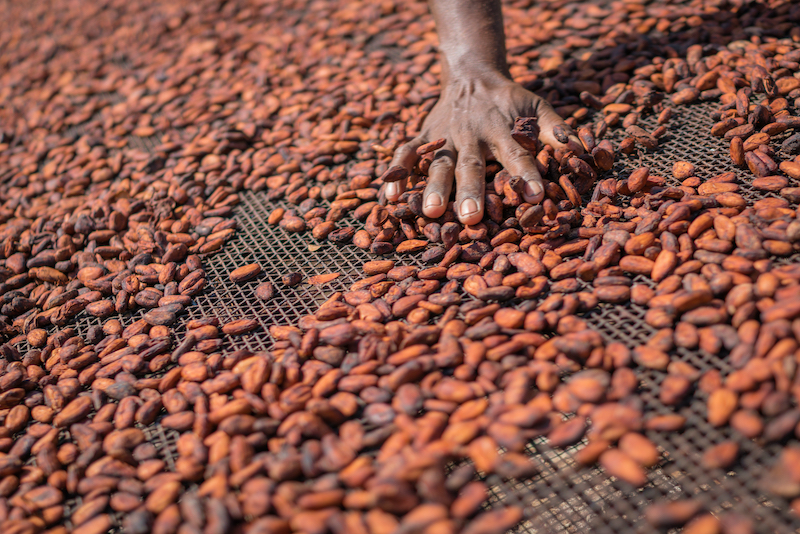The shocking tide of global child labour poses major societal and industry challenges

The latest figures from Unicef and the International Labour Organisation that reveal child labour has risen by over 8 million in four years, to a huge total of 160 million, are exceptionally shocking.
As far as the confectionery sector is concerned, the cocoa supply chain in West Africa nations of Ghana and Ivory Coast counts for at least 1.5 million of that utterly shameful total, which has, according to a number of industry reports, worsened amid the pandemic as economies grapple with unprecedented conditions.
The fact that 12th of June was World Against Child Labour day is equally alarming – as other industry observers have noted before, every single day should be World Against Child Labour day, so the fact that 20 years on from when the confectionery industry first began seriously tackling the issue, it’s especially concerning that progress appears to have been undone by the most recent course of world events.
Clearly, the huge underlying problem of poverty within the key cocoa producing territories of Ghana and Ivory Coast, in which many agricultural workers are believed to be paid under $1 a day, well below UN definitions of what constitutes a living income, continues to threaten the sustainability of the sector.
There is also a particularly dark cloud looming over the industry with the prospect of a major court case in the US in which defendants are attempting to hold some of the biggest companies in the industry to task over what they claim are allegations of child trafficking and forced labour in the cocoa industry. The decision on this, which is expected shortly, is likely to have a major long-term impact on the whole industry. Can a corporation be held liable for child labour issues? This is at the heart of the issue, and it has certainly divided opinion – there are many that certainly believe that such accountability is ultimately in everyone’s best interests to restore some balance to the sector in terms of addressing perceived major social injustices.
Having written extensively on the industry’s ongoing efforts to combat the problem of child labour, it’s clear that the likes of Mars, Mondelez, Nestle, Cargill and Barry Callebaut are all engaging on the issue with major individual schemes that have delivered results on the ground – though as they have admitted, present targets that are pegged to 2025 represent a considerable challenge given the scale of the broader issues that are undeniably interlinked with it.
Hopes for a financial boost
One of the great hopes for achieving these goals had been the region’s governments instituting the Living Income Differential – a premium payment of farmers of $400 a tonne for cocoa, which offset the basic prices paid for the prized commodity. In doing so it was hoped that this may take pressure off the agricultural sector to enable the host of smallholder farmers that make up the bulk of the industry in West Africa to pay farm labourers rather than rely on junior members of their respective households.
However, the deflated price of cocoa in the past year or two has effectively negated any gains from the LID scheme introduced last October, with the region’s industry seemingly back to square one, despite this genuinely encouraging effort that had the potential to hugely impact on cocoa communities and drive down child labour.
Ultimately, as a number of senior figures with the confectionery sector have noted, including Angus Thirlwell, co-founder of UK premium brand Hotel Chocolat, one of the single biggest changes that has to happen in order for us to achieve an equitable confectionery sector, will only come when consumers are willing to pay considerably more for their chocolate.
Again, as we previously covered, Mondelez International actually went as far as to put a figure on the scale of the problem – its No Silver Bullets report last autumn revealed that there is a $10 billion income gap for farmers in West Africa that the industry needs to directly address to make any meaningful impact.
As such, the many decades of it being seen as a largely cheap treat, have not helped those at the sharp end of the industry, who are fighting to earn a basic living – which even with the prospect of diversified agricultural earnings, are finding conditions particularly challenging in these pandemic-struck times.
Despite these multitude of challenges, there is some hope on the horizon, as we covered just a few days ago, in the form of due diligence legislation in Germany being approved. This could potentially herald EU-wide policy on ensuring sustainable sourcing principles for all cocoa produce entering Europe, which remains a huge market for the industry.
The significance of this cannot be underestimated – it really is a huge gamechanger, in laying down a marker for creating binding legal frameworks that enshrine mandatory legislation on child labour, environmental and community standards, which it is hoped will sweep aside the previous voluntary agreements that may well have been well meaning, yet lacked the teeth to have the most decisive level of impact on the ground.
With the issue steadily beginning to attract international media attention, this is a fundamental issue that needs to be resolved for the good of the entire industry and its future serving consumers with an ever-expanding range of confectionery – which is continuing to be delivered at an unacceptably high price for those working in the heart of the industry.
Neill Barston,editor, Confectionery Production
- Keep in touch at [email protected] or via social media: @confectionprod



